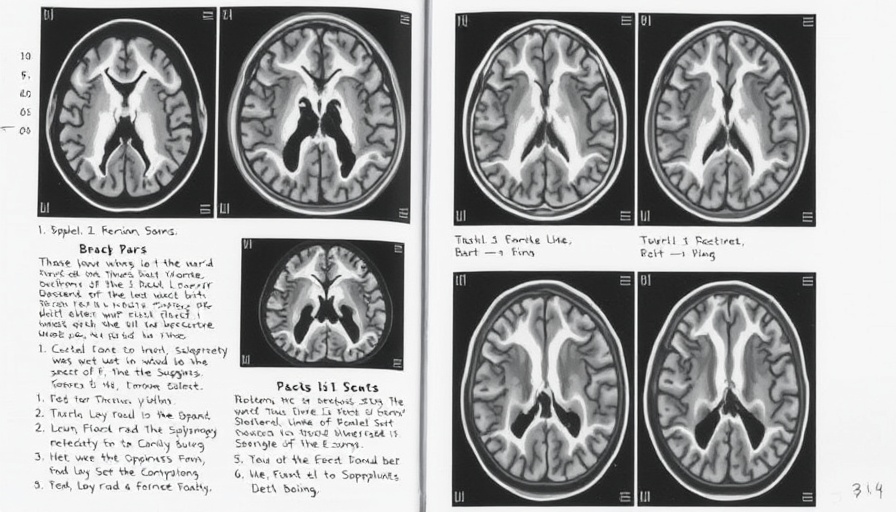
Breakthrough Drug Represents Hope for Parents and Children
Recent advancements in treatment options for cerebral adrenoleukodystrophy (cALD) reveal a beacon of hope for affected families. Research led by the Kennedy Krieger Institute has introduced leriglitazone, a groundbreaking oral medication aimed at slowing the progression of this rare and often fatal genetic brain disease, affecting boys aged 3 to 12. The last six-month analysis showed that all 11 participants in the ongoing NEXUS trial demonstrated slower disease progression, and encouragingly, nearly half of them saw a complete halt to the disease's progression.
The Significance of Early Intervention in cALD
Understanding the value of early diagnosis in managing cALD is crucial, as the disease primarily affects young children. This platform connects families to pediatric healthcare professionals who can guide them, optimizing health and wellness. If leriglitazone receives approval, it could serve as a first step towards a non-invasive, less risky treatment compared to traditional options like stem cell transplants, which often come with a host of complications and stringent eligibility requirements.
A Collaborative Path to Medical Advancement
Dr. Eric Mallack, a key figure in the research, emphasized that the progress made can be attributed to relentless collaboration among international cohorts. This study is part of a larger picture where global partnerships are crucial in addressing health and wellness challenges. The emphasis on teamwork underlines the importance of community efforts, reflecting how people can come together to explore health advancements that could reshape treatment paradigms.
Revisiting cALD: What Parents Should Know
For parents, awareness of this potentially life-altering condition is invaluable. cALD often progresses rapidly, leading to severe emotional, mental, and physical healthcare needs. The NEXUS trial signals not just hope for families dealing with this challenge, but also the growing relevance of supportive environments for children diagnosed with rare diseases. Such environments can include wellness centers focusing on community health and wellness, advocating for early detection and treatment that can improve life quality.
Next Steps in Treatment Development: What Lies Ahead?
The potential of leriglitazone opens doors to new therapeutic strategies. Experts predict that if clinical trials continue to show positive outcomes, it could shift the paradigm of treatment for cALD, marking a transition from supportive care to proactive treatment. For those interested in community health and wellness initiatives, being part of such discussions about treatments like these can empower patients and families to advocate for necessary resources and innovations.
Conclusion: The Path Forward for cALD
This moment in medical research serves as a reminder of what is possible when dedicated scientists work together towards common goals. The excitement surrounding leriglitazone indicates a commitment not just to treating diseases, but to fostering hope and improving the lives of children and their families. For those affected by cALD or interested in related health and wellness topics, staying informed and connected with emerging research and community resources is crucial to ensuring optimal health and well-being.
 Add Row
Add Row  Add
Add 




 Add Row
Add Row  Add
Add 


Write A Comment